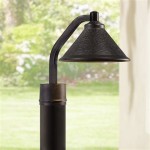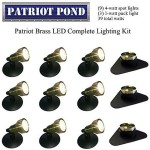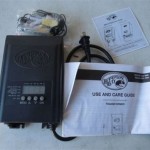Best Materials for Outdoor Wreaths
Outdoor wreaths serve as a welcoming adornment to homes, businesses, and public spaces, adding seasonal cheer or year-round aesthetic appeal. However, their exposure to the elements necessitates careful consideration of the materials used in their construction. Selecting the appropriate materials ensures longevity, durability, and sustained visual appeal despite fluctuating temperatures, moisture, sunlight, and wind.
A successful outdoor wreath balances aesthetic preferences with pragmatic material choices. Factors such as budget, DIY skill level, and regional climate play significant roles in determining the ideal materials. This article will explore a range of suitable materials for outdoor wreaths, highlighting their respective advantages and drawbacks to provide a comprehensive guide for selecting the best option for individual needs.
Understanding Environmental Factors that Affect Wreath Materials
Before selecting materials, it is crucial to acknowledge the potential impact of environmental factors on the wreath's lifespan and appearance. Sunlight, particularly ultraviolet (UV) radiation, can cause fading, discoloration, and degradation of certain materials over time. Moisture, in the form of rain, snow, or humidity, can lead to mold growth, rust, and warping, depending on the material's composition. Temperature fluctuations can cause expansion and contraction, potentially weakening joints and causing components to detach. Wind can physically damage the wreath, especially if it is not securely attached or if its components are fragile.
Therefore, material selection should prioritize resistance to these environmental stressors. UV-resistant coatings, waterproof finishes, and durable construction techniques can mitigate the negative effects of exposure. Understanding the predominant weather conditions in a specific location is critical for making informed material choices. For instance, a wreath intended for a coastal environment should prioritize materials resistant to salt spray and high winds, whereas a wreath designed for a cold climate must withstand freezing temperatures and heavy snowfall.
Exploring Durable Natural Materials
Natural materials offer an organic and aesthetically pleasing option for outdoor wreaths. However, their suitability depends heavily on proper preparation and treatment to enhance their resistance to the elements.
Evergreen branches, such as pine, fir, and cedar, are traditionally used for winter wreaths due to their resilience and enduring fragrance. They can withstand cold temperatures and retain their shape for an extended period. However, they are susceptible to drying out and browning if not properly hydrated. Consider using anti-desiccant sprays or periodically misting the branches to maintain their moisture content. Additionally, applying a fire-retardant spray is recommended to reduce the risk of fire hazards, especially when displaying the wreath near open flames.
Dried flowers and foliage, such as hydrangeas, lavender, and eucalyptus, can add a touch of elegance and color to outdoor wreaths. To enhance their durability, they should be thoroughly dried and treated with a sealant or varnish. Consider using silica gel to dry the flowers, which helps retain their shape and color. The sealant will protect against moisture and UV damage. However, even with treatment, dried flowers are generally more delicate than other materials and may require periodic replacement or touch-ups.
Natural cones, nuts, and berries can add textural interest and seasonal charm to wreaths. Pine cones, acorns, and berries are naturally durable, but treating them with a clear sealant can further protect them from moisture and pests. Baking the cones and nuts before use can also help to remove any lingering moisture and prevent insect infestations. Select berries that are naturally resistant to fading and discoloration, such as juniper or cranberries. Avoid using berries that are prone to attracting birds, as they may quickly deplete the wreath's embellishments.
Wood slices and bark can be incorporated into wreaths to create a rustic and natural aesthetic. Choose hardwoods like oak or maple for greater durability. Treat the wood with a sealant to prevent moisture absorption and warping. Bark can also be used, but select pieces that are securely attached to a backing or frame to prevent them from peeling or detaching. Consider using treated lumber or pressure-treated wood for the base of the wreath to enhance its overall resistance to decay.
Grapevines offer a flexible and sturdy base for outdoor wreaths. Their natural twists and turns provide an organic and visually appealing structure. Select grapevines that have been properly dried and cured to prevent them from shrinking or warping. They can be left in their natural state or stained or painted to complement the overall design of the wreath. Grapevine wreaths provide a strong foundation for attaching other materials, and their inherent durability makes them a long-lasting option.
Exploring Synthetic and Manufactured Materials
Synthetic and manufactured materials offer enhanced durability and often require less maintenance than natural alternatives. They are specifically designed to withstand the harsh conditions of outdoor environments. However, it’s important to choose high-quality materials that realistically mimic natural textures and colors to avoid a cheap or artificial appearance.
Artificial foliage, crafted from materials such as plastic, polyester, or silk, provides a realistic and long-lasting alternative to natural greenery. High-quality artificial foliage is UV-resistant, fade-resistant, and waterproof, making it ideal for outdoor use. Look for foliage with realistic textures and colors to enhance its visual appeal. Silk flowers, while beautiful, may require additional UV protection to prevent fading. Consider using artificial berries and fruits made from durable materials such as plastic or resin. These materials are less susceptible to damage from moisture and sunlight.
Ribbon, made from weather-resistant materials such as burlap, outdoor-grade polyester, or waterproof canvas, can add color and texture to outdoor wreaths. Avoid using ribbons made from delicate fabrics such as silk or satin, as they are prone to fading and fraying. Choose ribbons with reinforced edges to prevent unraveling in windy conditions. Regularly inspect and replace any ribbons that show signs of wear and tear to maintain the wreath's overall appearance.
Wire frames provide a sturdy and durable foundation for outdoor wreaths. Choose frames made from galvanized steel or powder-coated metal to prevent rusting. Wire frames allow for easy attachment of various materials using floral wire, glue, or zip ties. Opt for frames with multiple rings to provide ample support and prevent the wreath from sagging. Wire frames are also lightweight, making them easy to hang and transport.
Foam forms offer a lightweight and versatile base for outdoor wreaths. Choose closed-cell foam materials that are waterproof and resistant to mold and mildew. Foam forms can be easily cut and shaped to create custom wreath designs. Cover the foam with a layer of fabric or burlap before attaching other materials to provide a smooth and durable surface. Foam forms are particularly useful for creating wreaths with a smooth, sculpted appearance.
Plastic or resin ornaments and embellishments offer a durable and weather-resistant alternative to glass or ceramic decorations. Choose ornaments made from UV-resistant materials to prevent fading and discoloration. Securely attach the ornaments to the wreath using strong adhesives or wire to prevent them from detaching in windy conditions. Plastic and resin ornaments are lightweight and less likely to break than their fragile counterparts, making them ideal for outdoor use.
Key Considerations for Assembly and Maintenance
The construction and maintenance of an outdoor wreath are as important as the materials used. Proper assembly techniques ensure that the wreath remains intact and visually appealing, while regular maintenance prolongs its lifespan. Using weather-resistant adhesives, such as waterproof glue or epoxy, is crucial for securely attaching components. Floral wire, zip ties, and staples can also be used to reinforce connections. Ensure that all materials are tightly secured to prevent them from detaching in windy conditions. Overlapping materials and layering techniques can provide added strength and stability.
Applying a protective coating, such as a UV-resistant spray or sealant, can significantly extend the lifespan of outdoor wreaths. This coating will protect the materials from fading, discoloration, and moisture damage. Reapply the coating periodically, especially after exposure to harsh weather conditions. Store the wreath in a dry, protected location during the off-season to prevent damage from the elements. Cover the wreath with a breathable fabric or plastic bag to protect it from dust and pests. Avoid storing the wreath in direct sunlight, as this can cause fading and degradation of the materials.
Regular cleaning and inspection are essential for maintaining the appearance and integrity of outdoor wreaths. Gently dust the wreath with a soft brush or cloth to remove dirt and debris. Use a damp cloth to wipe down the surface, avoiding harsh chemicals or abrasive cleaners. Inspect the wreath regularly for signs of damage, such as loose components, fading, or mold growth. Promptly repair any damage to prevent further deterioration. Replace any materials that are significantly worn or damaged to maintain the wreath's overall appearance. With proper care and maintenance, outdoor wreaths can provide years of enjoyment and add a touch of beauty to any home or business.

Traditional Wreath Diy Fynes Designs

How To Make A Wreath National Trust

How To Make An Easy And Natural Foraged Wreath Pinecone Cottage Retreat

Wreath Material Gather Boughs Bows And Other Accessories

How To Make A Wreath 25 Best Ideas Tutorials Piece Of Rainbow

The Best Real Wreaths For 2024

45 Best Diy Fall Wreaths For Your Front Door

Spruce Up A Plain Evergreen Wreath Decorate With Foraged Materials

How To Make A Large Lighted Outdoor Wreath Pinch Of Joy

10 Best Wreaths Review The Jerum Post
Related Posts







